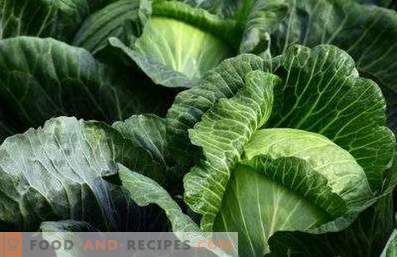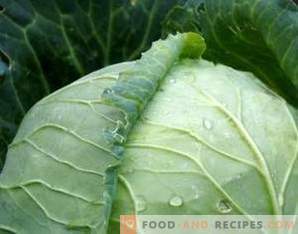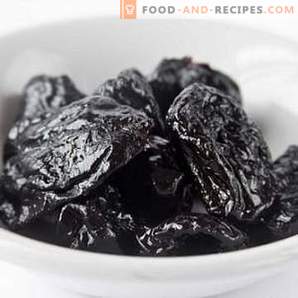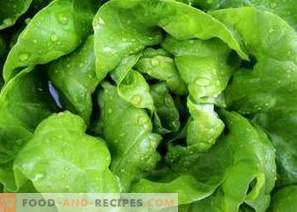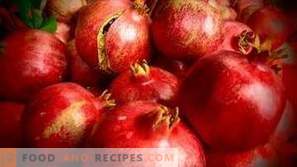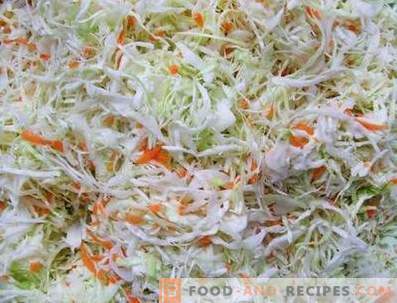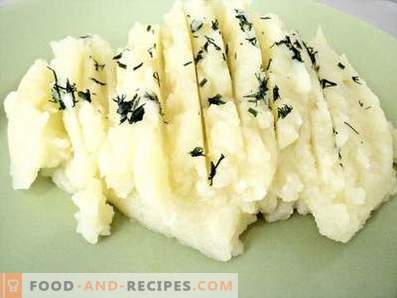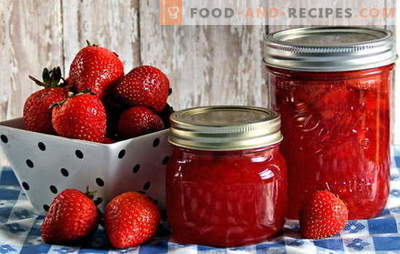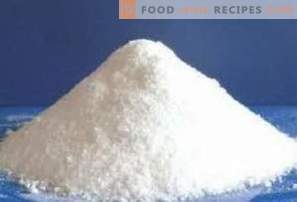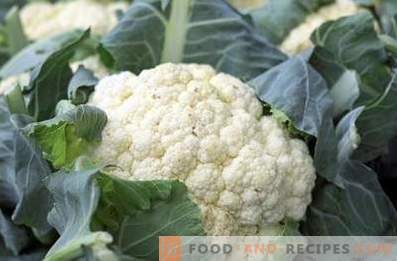
In Russia and Asia, cauliflower became popular not so long ago, although its useful properties in Western Europe were known in the 16th century.
- Due to the presence of methionine and choline in cabbage, this vegetable is useful for patients with diabetes, atherosclerosis, and for those with liver problems.
- In cauliflower there are vitamins: A, B1, B2, B3, PP, as well as trace elements: magnesium, calcium, phosphorus, iron ...
- Cauliflower is rich in carbohydrates.
- Cauliflower has less cellulose than white cabbage, so you can eat it with diseases of the gastrointestinal tract.
When to pick cauliflower
Cauliflower is harvested in several receptions as it ripens in sunny, dry weather, because wet cabbages are not subject to long storage and should be used as food as quickly as possible. For storage it is better to take cabbage later (autumn) harvest.
The heads are cut with 2-3 small covering leaves or twisted (dug out) along with the root. It depends on what kind of storage is chosen for cabbage.
Cabbage is dried in the fresh air for several hours, and then transferred to the room for further storage.
Cabbage can be stored in the cellar, in the basement, on the balcony and in the refrigerator.
How to store cabbage in the cellar or in the basement
Method 1. Cabbage pruned stalk and part of the leaves.
The boxes are lined with foil and put cabbage there, leaving a distance between the forks for ventilation. From above the boxes are also covered with an opaque film. Cauliflower is stored in a clean, well-ventilated area with an air temperature of 0-2 ° C and a humidity of 90-95%.
Method 2. Each head without leaves and roots is placed in thin plastic bags and stored in boxes.
Method 3. Each head of cauliflower is carefully wrapped in food film, creating a vacuum, and in this form is stored in a dark cool place.
Method 4. The cabbage is dug together with the root, the lower leaves are torn off, and the rest are lifted up, weakly tying the head with a string. Then the cabbage is planted in clean sand poured into boxes or directly on the floor. Be sure to cover this kind of bed with an opaque film. With this method of storage, the temperature should be about 4-6 ° heat.
This method is good for small heads that have not yet had time to ripen, as in this form they continue to grow.
Method 5. If cabbage stumps are not cut off, cabbage is hung behind them “upside down”, but in such a way that the heads do not touch each other.
Method 6. Heads without leaves and roots are folded one at a time into nets and hung from the ceiling.
Method 7. Clean cauliflower heads with one or two leaves are wrapped in newspapers, then put in plastic bags with several openings and stored in this form. A little later, the leaves break off, and the bags periodically change due to collecting condensate. Of course, you need to monitor the status of the paper.
How to store cauliflower in an apartment
If there is no basement or cellar, then cabbage can be stored on an insulated balcony, where the temperature does not fall below 0 ° even on frosty days. Cabbage is stored in the same way as the basement.
How to store cauliflower in the refrigerator
Cabbage without cobs and yellow leaves is well packaged in food film and stored in the vegetable compartment.
You can wrap the cabbage in paper, and then put in a plastic bag. But you need to change the packages as they appear in the condensate.
But whatever method is chosen for storage, it is necessary to periodically check the safety of the crop:
- Remove from the cabbage rotted and yellowed leaves.
- Shift cabbage, removing spoiled heads.
- Change cellophane and paper due to condensation.
- Air the room.
- Ensure that the temperature is kept within acceptable limits.
How to store the cabbage in the freezer
Cauliflower can be easily frozen.
- For this, the washed cabbage is disassembled into inflorescences and boiled for 3-4 minutes.
- Then the inflorescences are laid in a colander and wait until they dry out.
- Then they are put in plastic bags or plastic containers and frozen.
You can freeze fresh cabbage. To do this, clean cabbage is disassembled into inflorescences and dried from moisture, put in plastic containers and frozen.
Frozen cauliflower is used as needed.
After thawing the cabbage is not subject to re-freezing.

